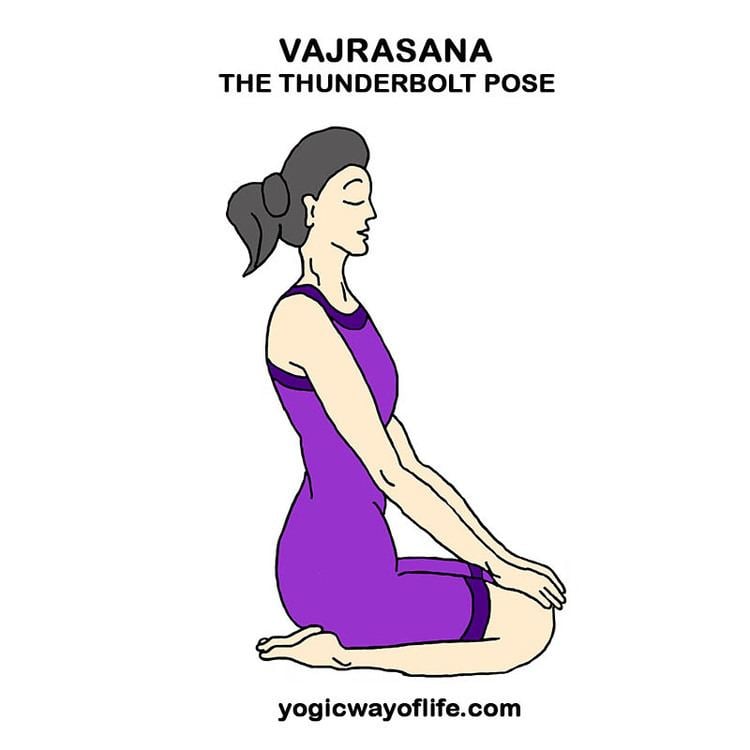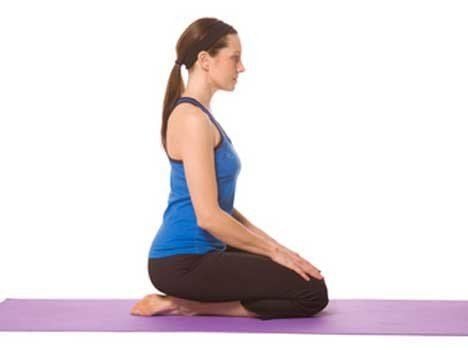Strengthens Human back, Leg Pose type Seated | Stretches Knee, Thigh, Hip, Ankle | |
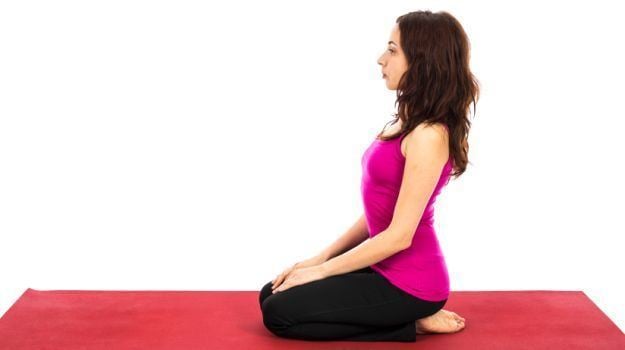 | ||
Note Consult a doctor before beginning an exercise regime Also known as Adamantine pose, Pelvic pose, Thunderbolt pose, Diamond pose, Kneeling pose Similar Bhujangasana, Lotus position, Dhanurasana, Sarvangasana, Tadasana | ||
Vajrasana वज्रासन (/vədʒˈrɑːsᵻnᵻ/; IAST: vajrāsana), "vajra Pose", is a sitting asana in yoga. It is a kneeling position sitting on the heels. A person need not be sitting in an erect position to do it.
Contents
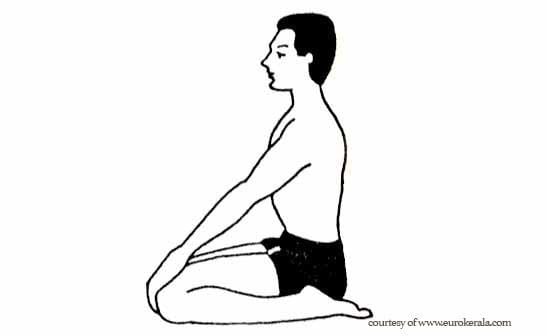
Etymology
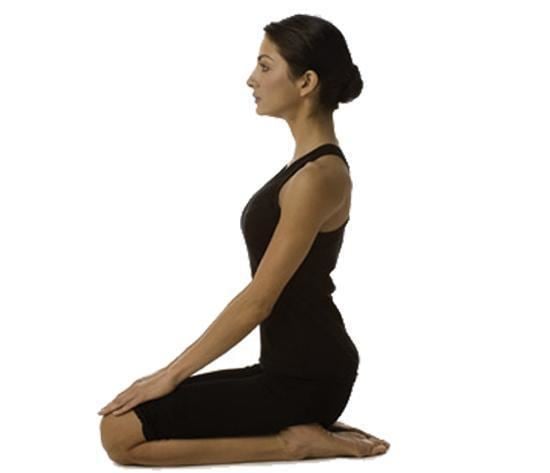
The name comes from the Sanskrit words vajra meaning "thunderbolt" or "diamond like", and asana (आसन, āsana) meaning "posture" or "seat".
Description
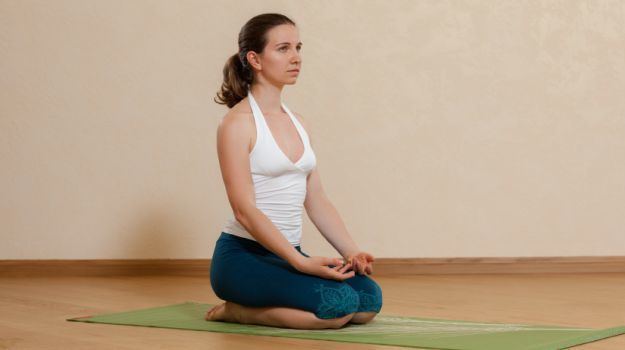
The practitioner sits on the heels with the calves beneath the thighs. There is a four finger gap between the kneecaps, and the first toe of both the feet touch each other and sit erect.
Benefits
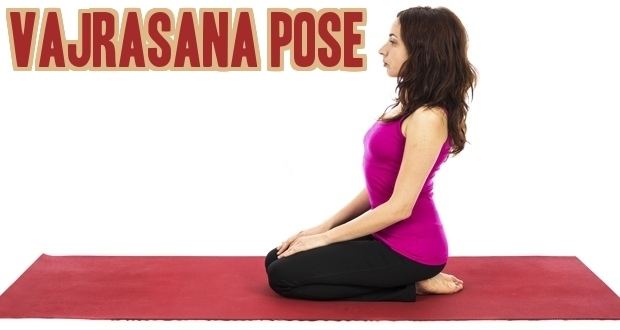
This asana may help in digestive issues like constipation. It also strengthens the muscles of the legs and back.
Contraindications and cautions
Some orthopaedic surgeons claim Vajrasana may be harmful to knees.

It has also been linked to damage to the common fibular nerve resulting in foot drop, where dorsiflexion of the foot is compromised and the foot drags (the toe points) during walking; and in sensory loss to the dorsal surface of the foot and portions of the anterior, lower-lateral leg. In this context it has been called "yoga foot drop".
